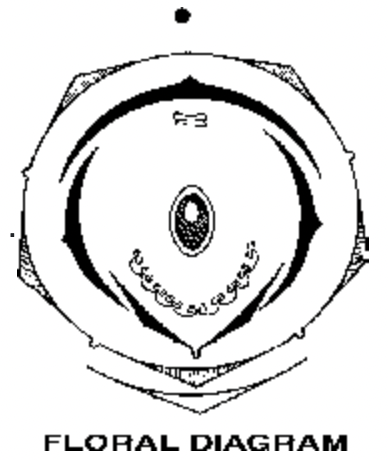Papilionaceae (Fabaceae)
Families Of Angiosperms of Class 11
Fabaceae
Systematic Position
Class-Dicotyledonae
Sub-class-Polypetalae
Series-Calyciflorae
Order-Rosales
Family-Leguminosae
Sub-family-Papilionaceae (Papilionoideae)
.
Distinguishing features :
(1) Flower perigynous, zygomorphic.
(2) Odd sepal anterior.
(3) Papilionaceous corolla.
(4) Androecium diadelphous (1 + 9)
(5) Monocarpellary, unilocular, superior ovary with marginal placentation.
(6) Fruit legume or lomentum

Economic importance
Mulathi is used as medicine in throat pain and cough. The fresh juice of ratti leaves is said to be useful in leucoderma, the juice of ‘agast’flowers is believed to be beneficial in improving eye sight. Sunn-hemp yields fibres, Indian rose-wood yields a dye. Some plants like Butea monosperma and Astragalus gummifer also produce medicinally useful gum. Soybean and gram are good for the patients of diabetes.
Important plants:
(1) Pisum sativum (Garden pea)
(2) Glycine max (Soya bean)
(3) Lathyrus odoratus (Sweet pea)
(4) Lathyrus aphaca (Wild pea)
(5) Sesbania cannabina (Dhencha)
(6) Abrus precatorius (Ratti)
(7) Cajanus cajan (Arhar)
(8) Pterocarpus santalinus (Red sandal wood)
(9) Phaseolus aureus (Moong)
(10) Phaseolus mungo (Urd)
(11) Crotolaria juncea (Sunn hemp).
(12) Arachis hypogea (Ground nut)
(13) Cicer arietinum (Gram)
(14) Lens esculenta (Masur)
(15) Dalbergia latifolia (Rose wood)
(16) Dalbergia sisso (Shisham)
(17) Vicia faba (Broad bean)
(18) Glycirrhiza glabra (Mulathi)
(19) Phaseolus vulgaris (Kidney bean)
(20) Trigonella foenum graceum (Fenugreek)
(21) Butea monosperma (Flame of the forest)
(22) Indigofera tinctoria (Indigo)














